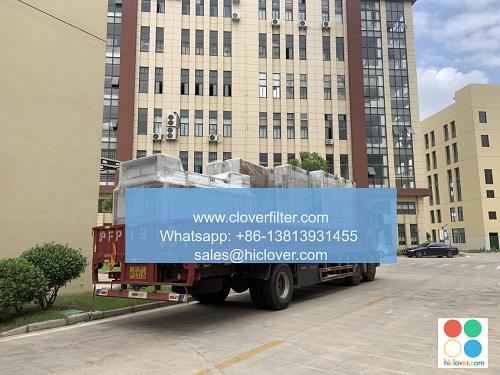The Science Behind Air Filter Media: A Review of Materials and Technologies

Air filter media play a crucial role in maintaining indoor air quality by removing pollutants, allergens, and other airborne contaminants. The science behind air filter media is complex and involves a range of materials and technologies. In this article, we will review the different types of air filter media, their properties, and applications, with a focus on HEPA filters, activated carbon filters, and nanofiber filters.
Introduction to Air Filter Media
Air filter media are designed to capture airborne particles, including dust, pollen, bacteria, and viruses. The efficiency of an air filter depends on the type of media used, its pore size, fibers density, and surface area. The most common types of air filter media include fiberglass filters, pleated filters, and electrostatic filters. Each type of media has its own strengths and weaknesses, and the choice of media depends on the specific application and air quality requirements.
Fiberglass Filters and Their Limitations
Fiberglass filters are the most common type of air filter media. They are inexpensive and easy to manufacture, but they have several limitations. Fiberglass filters have a relatively large pore size, which means they are not effective at capturing small particles, such as PM2.5 and ultrafine particles. Additionally, fiberglass filters can be prone to shedding and fiber release, which can exacerbate respiratory problems.
High-Efficiency Particulate Air (HEPA) Filters
HEPA filters are a type of air filter media that are designed to capture 99.97% of particles as small as 0.3 microns. HEPA filters use a combination of interception, impaction, and diffusion to capture particles. They are widely used in hospitals, cleanrooms, and industrial applications where high levels of air purity are required. HEPA filters are also used in residential air purifiers and commercial HVAC systems to improve indoor air quality.
Activated Carbon Filters and Their Applications
Activated carbon filters are a type of air filter media that are designed to capture gases and odors. They are widely used in air purifiers, kitchen range hoods, and industrial applications where gas removal is required. Activated carbon filters work by adsorbing gases and odors, rather than capturing particles. They are effective at removing volatile organic compounds (VOCs), nitrogen dioxide, and other gases.
Nanofiber Filters and Their Advantages
Nanofiber filters are a type of air filter media that are made from nanoscale fibers. They have a number of advantages over traditional air filter media, including higher filtration efficiency, lower pressure drop, and increased surface area. Nanofiber filters are widely used in industrial applications, cleanrooms, and biomedical applications where high levels of air purity are required.
Conclusion and Future Directions
In conclusion, the science behind air filter media is complex and involves a range of materials and technologies. The choice of air filter media depends on the specific application and air quality requirements. HEPA filters, activated carbon filters, and nanofiber filters are just a few examples of the many types of air filter media available. As air quality continues to be a major public health concern, the development of new and innovative air filter media will be crucial in maintaining healthy indoor environments. Future research should focus on improving filtration efficiency, reducing pressure drop, and increasing surface area to create more effective and efficient air filter media.
Recommendations for Applications
Based on the review of air filter media, we recommend the following applications:
* Residential air purifiers: HEPA filters or nanofiber filters
* Commercial HVAC systems: HEPA filters or activated carbon filters
* Industrial applications: Nanofiber filters or activated carbon filters
* Cleanrooms: HEPA filters or nanofiber filters
* Biomedical applications: Nanofiber filters or HEPA filters
By choosing the right air filter media for the specific application, we can improve indoor air quality, reduce the risk of respiratory problems, and create healthier environments. You haven’t provided a question or topic for discussion. What would you like to talk about? I can offer information, answer questions, or provide opinions on a wide range of subjects. Please feel free to ask me anything.

